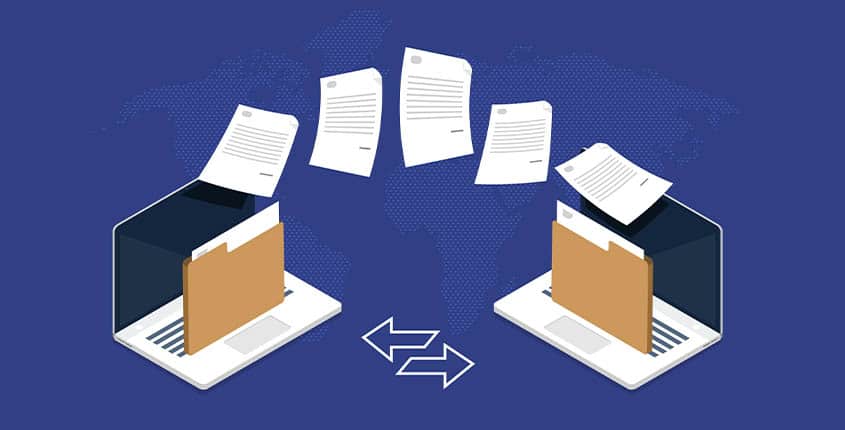Data Migration: What is it?
Big data is what drives most modern businesses, and big data never sleeps. That means data integration and data migration need to be well-established, seamless processes — whether data is migrating from inputs to a data lake, from one repository to another, from a data warehouse to a data mart, or in or through the cloud. Without a competent data migration plan, businesses can run over budget, end up with overwhelming data processes, or find that their data operations are functioning below expectations.
What is Data Migration?
Data migration is the process of transferring data from one storage system or computing environment to another.
There are many reasons your enterprise might need to undertake a data migration project. For example, you might be replacing servers or storage devices or consolidating or decommissioning data centers. Data migration is also an essential step in the overall process of migrating on-premises IT infrastructure to a cloud computing environment.
Whether you’re moving to a public cloud, private cloud, hybrid cloud, or multi-cloud environment, you’ll need to find a secure, cost-effective, and efficient method of migrating your data to its new storage location.

Types of data migration
There are numerous business advantages to upgrading systems or extending a data center into the cloud. For many firms, this is a very natural evolution. Companies using the cloud are hoping that they can focus their staff on business priorities, fuel top-line growth, increase agility, reduce capital expenses, and pay for only what they need on demand. However, the type of migration undertaken will determine how much IT staff time can be freed to work on other projects.
First, let’s define the types of migration:
- Storage migration: The process of moving data off existing arrays into more modern ones that enable other systems to access it. Offers significantly faster performance and more cost-effective scaling while enabling expected data management features such as cloning, snapshots, and backup and disaster recovery.
- Cloud migration: The process of moving data, applications, or other business elements from either an on-premises data center to a cloud or from one cloud to another. In many cases, it also entails a storage migration.
- Application migration: The process of moving an application program from one environment to another. This may include moving the entire application from an on-premises IT center to a cloud, moving between clouds, or simply moving the application’s underlying data to a new form of application hosted by a software provider.
Data Migration Best Practices
There are some best practices that should be observed when conducting a data migration exercise to ensure the process is seamless with a high degree of success whilst avoiding costly delays.
- A dedicated migration team should be set up with the right specialists in place to manage and steer the project.
- Data migration should be a chance to clean data and raise its quality standard before it is transmitted so as not to inherit inferior quality data with old problems.
- The amount of data to be migrated should be right-sized as much as possible. Data cleaning can assist in ensuring that only quality and useful data is migrated.
- All data should be profiled before writing mapping scripts.
- Backup data before the migration begins to guard against data loss.
- Keep testing the migration from planning and design stages to execution and maintenance to guarantee the success of the migration project. The old system should only be switched off after confirmation of the success of the migration process. If it fails, a roll-back will be necessary with no downtime as the old system will still be running.

Risks
Though the benefits of modernizing IT systems outweigh the risks associated with data migration – especially over the long term – data migration can be stressful and risky. Here are some of the risks to account for:
- Security: Make sure all data is securely encrypted before migration. For offline migrations that involve shipping data storage devices, verify the security of the shipper’s freight and logistics services.
- Long transfer times: It can be challenging to predict online transfer times with complete accuracy. Network bottlenecks may restrict connection speeds, or system hardware limitations might throttle the amount of data that can be read from or written to them.
- Higher-than-expected costs: Unanticipated costs often result from improper planning. For example, online transfers that take longer than expected will incur additional charges. Retaining a vendor-provided storage appliance for longer than you’d initially agreed to keep it (which can result from transferring the data to the appliance or shipping delays) can incur extra charges as well.
The data migration process
Ideally, moving data to a new platform, location, or architecture can be completed with no data loss, minimal manual data manipulation or re-creation, and little-to-no downtime. The ETL process of extracting the data, transforming the data, and then loading the data can be especially helpful with complex migrations that involve huge datasets.
There are three phases to every data migration project:
- Planning is the most important part of any data migration effort. Key considerations when developing your data migration strategy include data sources and destinations, security, and cost.
- Migration is the active stage of the process when data is moved from the source to the destination.
- Post-migration is the last step when you check to confirm that the migration was executed correctly.

Migrating Data to the Cloud
Increasingly, organizations are migrating some or all of their data to the cloud to increase their speed to market, improve scalability, and reduce the need for technical resources.
In the past, data architects were tasked with deploying sizeable server farms on-premises to keep data within the organization’s physical resources. Part of the reason for pushing ahead with on-site servers had been a concern for security on the cloud. However, as major platforms adopt security practices putting them on par with traditional IT security (and necessarily in compliance with the GDPR), this barrier to migration has largely been overcome.
The right cloud integration tools help customers accelerate cloud data migration projects with a highly scalable and secure cloud integration platform-as-a-service (iPaaS). Talend’s suite of open source, cloud-native data integration tools enable drag-and-drop functionality to simplify complex mapping, and our open-source foundations make our solution cost-effective and efficient.